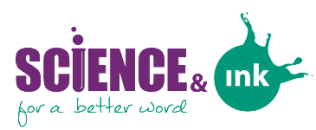Andrew Lam, MD
Hudson, New Hampshire, Health Alert Communications, 2012; Hardcover, paperback, and digital formats, 103 pages, $7.00
The book recounts the stories of 6 of the most important visionaries and innovators in the fields of ophthalmology, whose lifetime work revolutionized the medical practice in their field and is saving the eyesight of millions of people today. This book is a testimony to their personal and professional lives and their perseverance and endurance in the face of criticism and ridicule as they sought to prove their ideas to the world.
“Saving Sight” is not only a great reference for ophthalmologists, ophthalmic surgeons, academics in the medical field, clinical researchers, public health, and healthcare professionals, but also a passionate read to the general lay audience, and particularly to patients with eye diseases.
Every chapter opens with a more recent patient case encountered at Dr. Lam’s office, then delves into the history of the brilliant ophthalmologist who invented the specific techniques or tools that Dr. Lam is using today in his own office.
The first hero is Dr. Harold Ridley, to whom we owe today the intraocular lens (IOL). “It is a pity, doctor, that you cannot replace the cataract with a clear lens,” Dr. Ridley tells one of his students—a memory that later triggers his major discovery.
Charles Kelman’s “phacoemulsification” technique, revolutionized cataract surgery and inspired major innovations in other fields of medicine. (This technique involves ultrasonic emulsification and suction removal of the cataract lens, providing a clear field for replacement lens implantation.1) “Because he was the first in medicine to remove tissue through a small incision, some have credited him with inspiring the revolution in small incision laparoscopic surgery.”
The binocular indirect microscope, indispensable today in the correct diagnosis and treatment of eye diseases, is credited to Charles Schepens, the “father of modern retinal surgery.”
“To a retinal surgeon like me, Charles Schepens is the Thomas Edison, Charles Lindburgh, and Henry Ford of our field.”
Before Arnall Patz, MD, premature babies affected with retinopathy of prematurity (ROP) were condemned to a life of blindness; now there is a treatment option.
Avastin®2 and Lucentis®,3 breakthrough medicines used today in wet macular degeneration and numerous cancers, are the result of research by ophthalmologist Judah Folkman.
At the origins of LASIK surgery is a technique pioneered by Jose Barraquer, a technique which later inspired ophthalmologist Svyatoslav Fyodorov, and brought him fortunes as he practiced it around the world.
The novel ends with the heartwarming story of Louis Braille, and his alphabet that “opened the eyes” of millions.
The book is rich in statistics and clinical journal references. Complicated surgery techniques are simplified to the lay reader with powerful analogies and clear illustrations. Perhaps the most interesting aspect of the book is the sociopolitical and historical context that shaped the characters’ lives, and affected the course of their discoveries.
Dr. Andrew Lam connects with the reader with a touching humility: “The first time I saw the retina through the indirect ophthalmoscope, I gasped. It was incredibly beautiful. There had only been a few similar awe-inspiring moments…the first time I saw a beating heart and held it in my hands during cardiac surgery.”
With its realistic portrait of the medical profession and clinical research, its human approach to patient treatment, its criticism of today’s US medicolegal system, and its in-depth analysis of healthcare economics, “Saving Sight” is starkly relevant today and a highly educational book for physicians and patients alike.
References
- US NLM, Pub Med Health. Phacoemulsification. Available at https://www.ncbi.nlm.nih.gov/pubmedhealth/PMHT0024951/. Accessed April 22, 2017.
- Avastin PI
- Lucentis PI
Reviewer: Marielle Fares, Pharm.D., MBA, BCGP
Marielle is a scientific editor and medical writer in the healthcare, pharmaceuticals and clinical research sectors in Washington DC.
